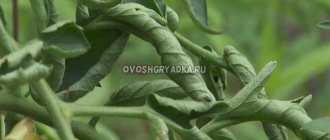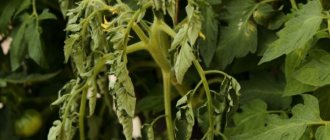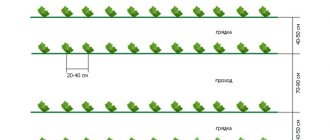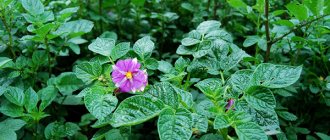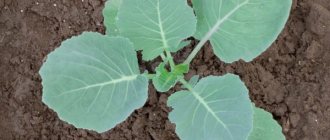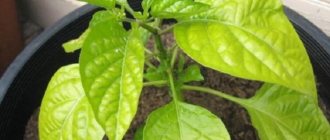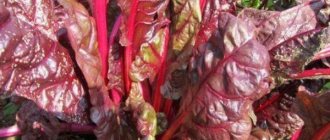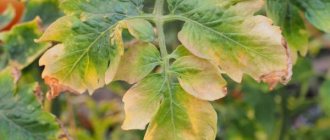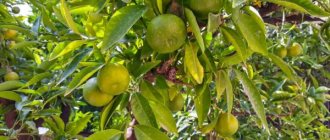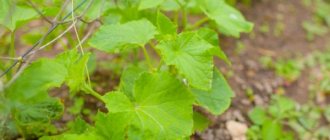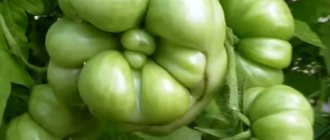It's hot in the greenhouse
The temperature in the greenhouse is usually about 27-28 degrees. At the same time, it is combined with poor air circulation, which causes the tomatoes to curl their leaves. This allows them to avoid the threat of significant evaporation of moisture. At night they return to normal as the heat subsides.
To avoid this, it is recommended to leave the greenhouse open at night for ventilation, even in cold weather, and on particularly hot days to create artificial shade using spunbond.
Soil and air humidity
When the soil is too dry, the plant tries to reduce water loss. Moisture evaporates mainly from the bottom of the leaves, so they curl their edges down to reduce the area of evaporation. At the same time, they become sluggish, and with an acute lack of moisture, yellowish.
If there is too much water in the soil, the leaves will also droop and curl, but usually remain green. Excess water is also dangerous because it causes rotting of the roots and death of the entire plant. It is recommended to moisten the soil only when its top layer (about 2 cm) has dried out. This does not apply to newly emerged seedlings, whose roots are still very short. In addition, you need to take into account that each type has its own optimal irrigation regime.
With increased air humidity, the edges of leaves, especially young ones, curl. This also happens when the humidity is generally normal, but the plants are planted so close to each other that the space between them is poorly ventilated. At low humidity, especially if the weather is hot, the leaves droop, their tips wrinkle, and the edges turn yellow.
Lack of nutrition
Plants may lack nutrients. In order to find out which ones, you need to carefully look at the direction in which the leaves curl.
If they curl upward and turn purple on the underside, then the tomatoes are lacking phosphorus. To compensate for its deficiency, it is necessary to use an extract from superphosphate (pour 1 tablespoon of fertilizer into 1 liter of boiling water and leave for 12-18 hours, after which the concentrate is diluted with 10 liters of water). Water at the root. One bush will require 0.5 liters of fertilizer.
If the leaves curl upward and yellow spots or blackness appear on them, there is not enough copper. To replenish its reserves, you can use any fertilizer for watering or spraying with it in its composition.
If the leaves curl upward and a brown border appears along the edges, then the tomatoes do not have enough potassium. Potassium nitrate will help change the situation. For watering, you need to dilute 1 tbsp. fertilizers in 10 liters of water.
With a lack of nitrogen, the leaves turn yellow and curl down. In this case, fertilizing with either mineral fertilizer or manure is necessary. Dilute 0.5 liters of liquid manure in 10 liters of water and water at the rate of 1 liter of fertilizer per bush.
If the leaves curl upward, and a little later blossom end rot appears, then the plant is experiencing a lack of calcium. Calcium nitrate is suitable for feeding, which must be diluted in a proportion of 10 g per 10 liters of water.
Common Tomato Diseases
Curling of plant leaves can be a consequence of viral and fungal infections. But in addition to this manifestation, others arise that are characteristic of a particular disease.
Diseases and their treatment:
- Bacteriosis. The cause of the disease is seeds that have not undergone the disinfection procedure. This makes young plants vulnerable. With bacteriosis, tomato leaves not only curl down, but also become smaller over time. The emerging flowers turn white. Seedlings slow down in growth. It is impossible to get rid of bacteriosis. Infected plants must be removed by the roots and burned so that the disease does not spread to other tomatoes.
- Fusarium. A fungal infection that spreads to tomato seedlings from the soil. First, the lower part of the bush is affected, and then all the leaves. The infected specimen is disposed of, and the soil is treated with a saturated solution of potassium permanganate. Neighboring bushes are sprayed with fungicides.
- Thin leaf virus. Another reason why leaf plates curl. Most often, the disease appears during periods of summer drought. The leaves turn into thin tubes, and the fruits appear very small. Treatment with a solution of potassium permanganate mixed with urea helps with this disease. In advanced cases, plants die.
- Bacterial cancer. It is considered a greenhouse disease. Tomatoes growing in open ground do not suffer from it. Develops at very high temperatures (more than +25 degrees) and excessive humidity. The leaf blades curl, and cracks along the entire length and ulcers form on the trunks. If you cut the stem, the brown ring inside will be clearly visible. The fruits become deformed and their seeds turn black.
Untimely stepsoning
Pinching is the process of removing competing processes. In order for tomatoes to receive the highest concentration of nutrients, it is necessary to monitor the number of shoots and promptly remove excess ones.
Stepchildren must be removed when their size has not yet exceeded 5-7 cm. If this is done later, the plant will react painfully. In this case, spraying with Zircon or Epin-Extra preparations will be required.
Curling of leaves in tomatoes: possible causes
Changes in the leaf blade of tomatoes occur under various conditions:
- the emergence of infectious diseases;
- violation of agrotechnical practices.
Curling the tops and chopping the leaves is a signal to the gardener that the tomatoes need treatment or care adjustments.
Another reason for the appearance of the upper leaves curled like “boats” may be a varietal feature.
A number of tomato varieties and hybrids have thin leaf blades, the edges are heavily cut and because of this they bend and curl. The list of such tomatoes:
- Fatima;
- Oxhart (Germany);
- Cherry;
- Honey drop;
- Japanese crab.
The absence of brittleness, spots, and falling leaves are signs that everything is fine with the plants and there is nothing to worry about. In all other cases, you will have to find out the reason and take action.
Pests attacked
In a greenhouse, tomatoes can be attacked by whiteflies. This is a small butterfly that lays eggs on the underside of a leaf. The insect feeds on plant juices. The danger may also lie in the fact that the pest secretes sweet honeydew, on which sooty fungus multiplies. A clear sign of damage is curled leaves that gradually begin to turn yellow and fall off.
To get rid of whiteflies, you can use glue traps that are placed on the tops of bushes, Fitoverm for spraying, or Aktaru.
Leaves curl due to pests
In addition to agricultural errors, the reason for leaf curling may be the appearance of insect pests:
- Whiteflies;
- Aphids;
- Spider mite.
The whitefly prefers the undersides of the leaves of tomato plants. If you do not fight it, then first black spots appear on the leaves, and then they curl and dry out.
Whitefly larvae
If you notice this pest, then treat the tomato bushes with the insecticides Fufanon and Mospilan . These are very effective drugs, but they can be used no later than three weeks before harvest. This is necessary so that the poison is completely removed from the tomatoes.
If the whitefly appears after this period, then use folk remedies. For example, an infusion of yarrow, celandine or garlic and a soap solution.
IMPORTANT! To completely get rid of whiteflies, several preventive treatments are carried out per season.
Aphids are dangerous because they feed on plant sap. It literally sucks the vitality out of tomatoes, causing the leaves to wither, curl, and then the plant dies altogether.
Aphids can be easily spotted if you regularly inspect your tomato bushes.
Insecticides “Iskra”, “Aktara”, “Proteus” . Sticky traps placed near tomato bushes also help.
Among the most effective folk remedies:
- soap solution;
- infusion based on celandine and garlic;
- ash solution (1 glass per bucket of water).
Plants must be treated every 7 to 10 days. More often you can use only folk remedies.
REFERENCE. In the fight against aphids, the destruction of anthills located on the beds with tomatoes helps.
Spider mites most often attack tomatoes in greenhouses and greenhouses. The main signs of its appearance: curled leaves, cobwebs, change in color of the stems.
You can fight spider mites using chemicals. Of the insecticides, Oberon and Flumite .
To prevent the appearance of spider mites, experienced gardeners advise treating tomato bushes with an infusion of henbane, garlic and dandelions.
Roots are damaged
The root system can be damaged during loosening or when transplanting seedlings into a greenhouse. In the second case, you just need to wait until the plant gets stronger and returns to normal. Under normal conditions, this occurs within 5-7 days. Otherwise, you can use stimulants, for example, Kornevin or Heteroauxin.
In case of inaccurate loosening, tomatoes should be immediately watered with root formation stimulants, for example, “Kornerostom”. Products to support the immune system, such as Zircon, will also help.
Improper watering of tomatoes
This is perhaps the most common reason why leaves curl. Everyone probably knows that tomatoes love plenty of moisture, but these plants need to be watered not from time to time, taking long breaks, but regularly. It is precisely the violation of water doses, irrigation timing, and frequency of soil moisture that can lead to troubles in the form of curling leaf blades.
For example, tomatoes especially need moisture immediately after planting seedlings in open ground or a greenhouse, that is, in a permanent place. During this period, you need to pour 4-5 liters of water under them. Further, repeated watering can be done 9-11 days after the first; 6-8 liters of water can be poured under each bush.
In the future, tomatoes should be watered regularly in the greenhouse - once or twice a week, depending on whether it is hot or cool in it, and in open ground - depending on the presence or absence of natural moisture (rain). If there is no rain, then watering should be done every week, pouring 5-7 liters of water under the bush, but if it rains periodically, then watering may not be necessary.
During the formation of ovaries and the beginning of fruiting, the tomato watering should be increased by a third, but again, you should look at the weather.
When there is a lack of moisture, the tomato leaf blades begin to curl inward, so the plants protect themselves by minimizing the amount of evaporated moisture. If you notice this, then you need to quickly start watering the soil, but you should not pour out a lot of water at once; it is better to pour out 1.5-2 liters of water at room temperature every day for a week, until the condition of the leaf blades normalizes.
If, on the contrary, there is a lot of moisture in the soil, then the tomato leaves will curl with their edges up, thus increasing the evaporation of moisture by the plant. Here you need to immediately stop watering and do not moisten the soil for 10-15 days.
Do not forget that it is better to water tomatoes in the morning or evening to avoid curling of the leaf blades. Avoid watering your plants during the heat of the day, especially if it is very hot and the sun is shining brightly. For irrigation, use settled water at room temperature.
Curling of tomato leaves due to improper care
